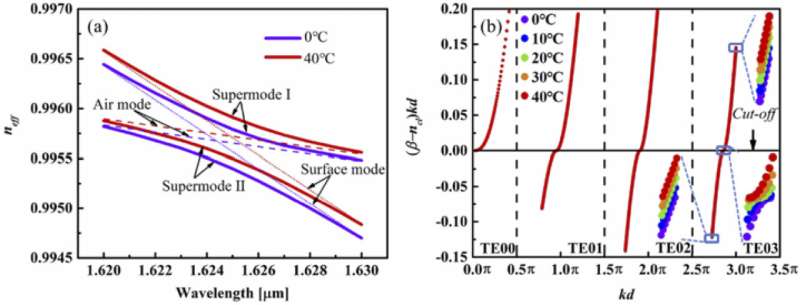Surface mode coupling used to adjust thermal coefficient of delay of photonic-bandgap hollow-core fiber

Recently, a research team from Shanghai Institute of Optics and Fine Mechanics (SIOM) of the Chinese Academy of Sciences (CAS) has proposed a new method of using surface mode (SM) coupling to adjust the thermal coefficient of delay (TCD) of photonic-bandgap hollow-core fiber (PBG-HCF) in an extended range. The relevant results have been published in Optics Express.
The temperature dependence of group delay in the conventional optical fiber comes from the intrinsic properties of the material which is hardly eliminated. As a result, the fluctuation of ambient temperature inevitably results in thermal-related phase noise on light transmitted through the fiber, which is hazardous for propagation time sensitive applications.
After a series of numerical simulations, the researchers found that the redshift of the avoided crossing of SM coupling can significantly tune the TCD of PBG-HCF from -400 ps/km/K to 400 ps/km/K, approximately -120 ppm/K to 120 ppm/K. The local loss introduced by SM coupling was predicted to be moderately low showing the promising potential of long length fiber application in practical use.
The researchers pointed it out that the application of the method for PBG-HCF design for the practical TCD control over a long fiber length will depend on the suppression of increase of local loss by SM coupling, which needs more efforts in both theory and experiment.
More information: Yazhou Wang et al, Temperature-Dependent Group Delay of Photonic-Bandgap Hollow-Core Fiber Tuned by Surface-Mode Coupling, Optics Express (2021). DOI: 10.1364/OE.443075
Journal information: Optics Express
Provided by Chinese Academy of Sciences





















